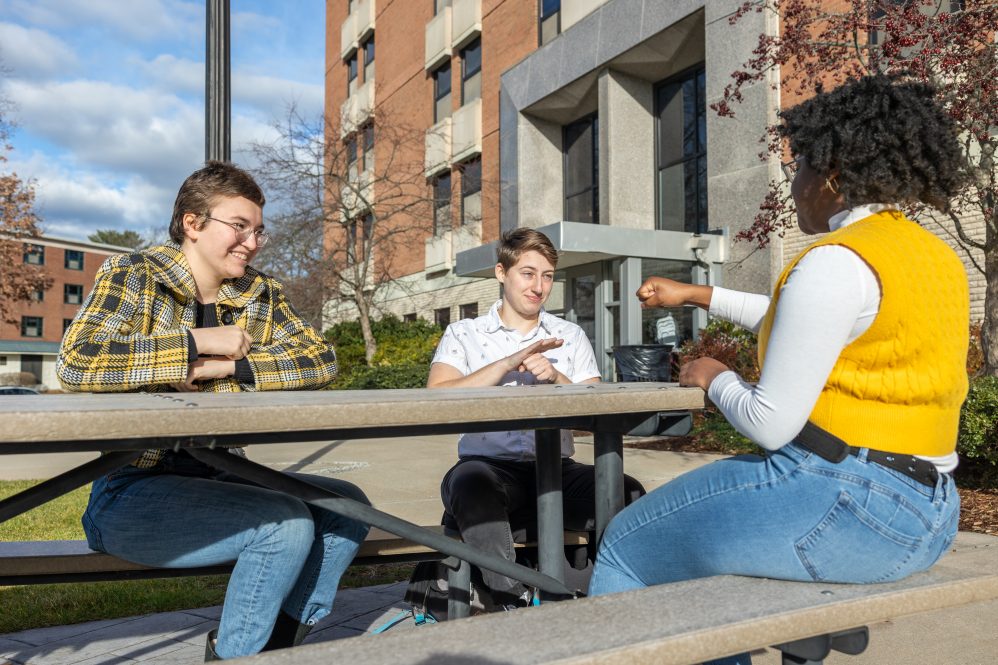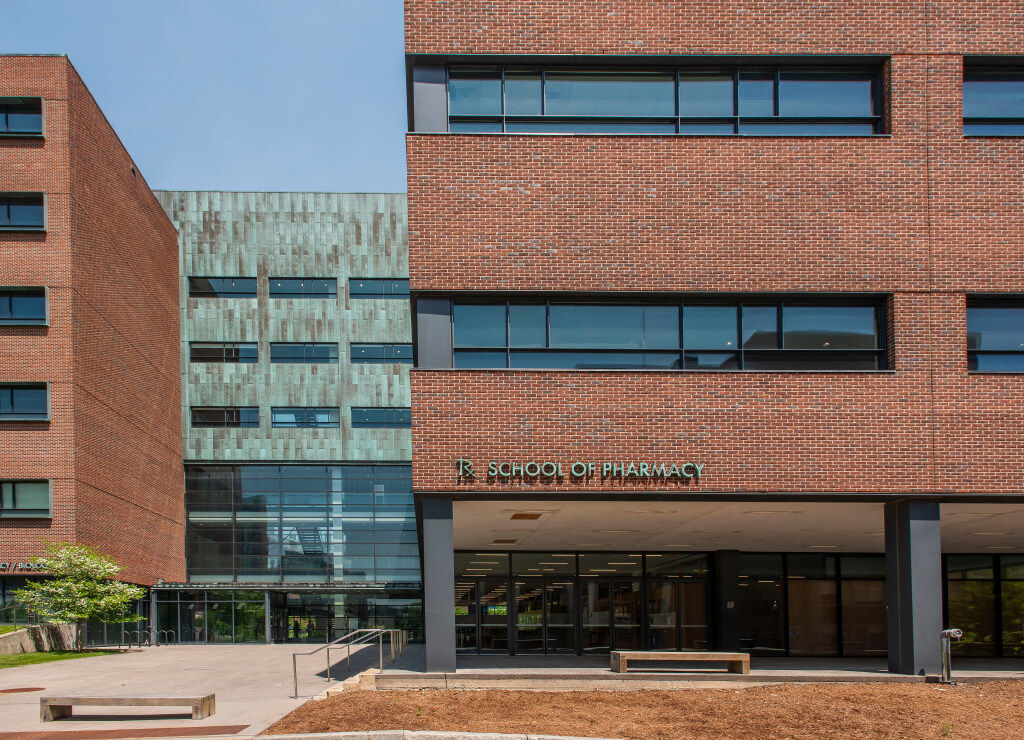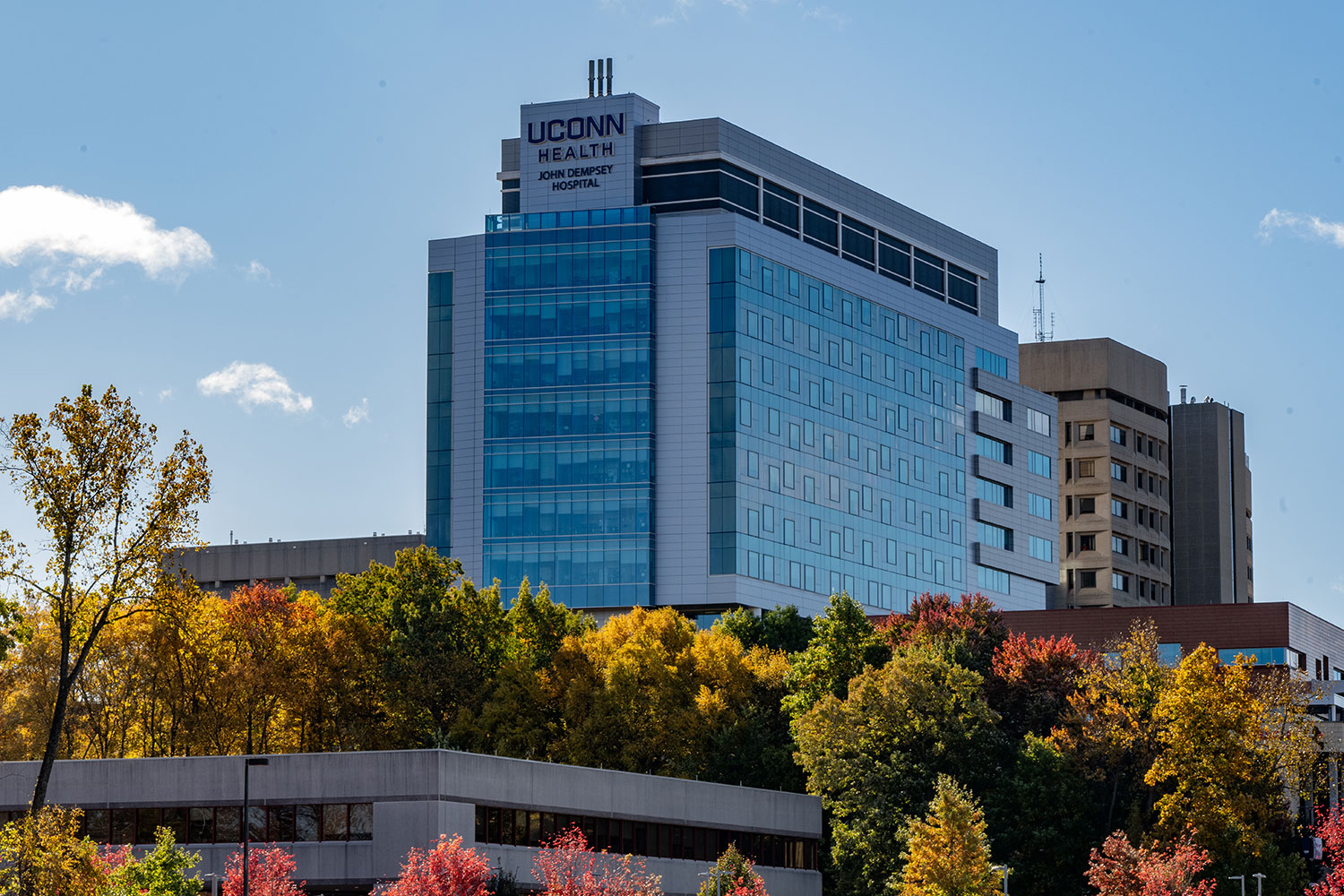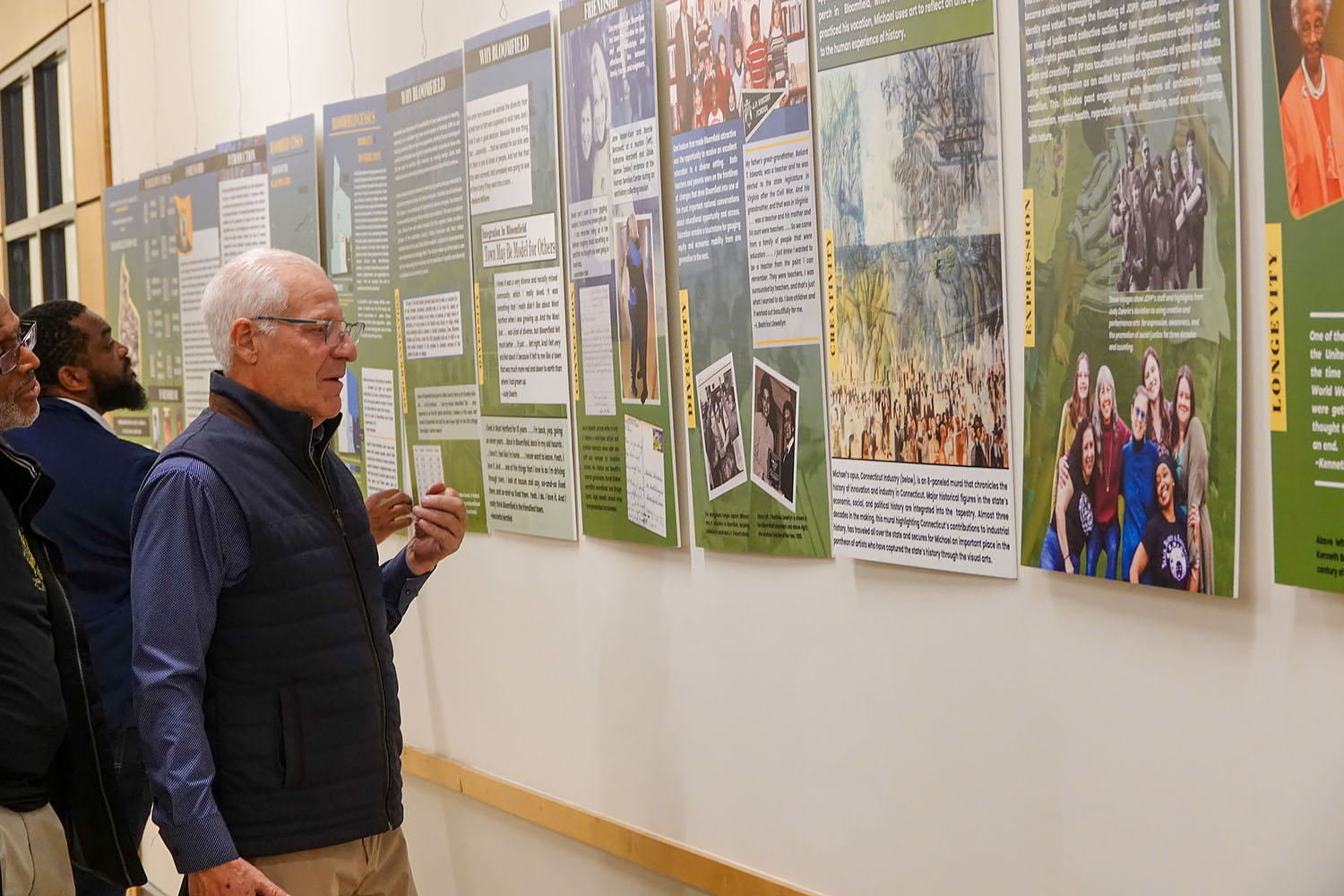For many UConn students, on-campus housing provides a space to connect with others in a variety of ways, such as movie nights with roommates or quick conversations in the hallway. In one special interest housing community, students are making these same connections, but in American Sign Language (ASL).
On the co-ed sixth floor of Watson Hall in the Alumni residential quad, ASL Community Housing includes and welcomes hearing students proficient in ASL. The community, which is in its first year, is also an accessible living space for undergraduate students who are Deaf, DeafBlind, Hard-of-Hearing, and/or children of Deaf adults (CODAs) regardless of their language use.
In 2020, UConn became the first – and remains the only – higher education institution in Connecticut to offer a bachelor’s degree in ASL. Lauren Gobler ’23 (CLAS), an ASL major and human development and family sciences (HDFS) minor, serves as the current coordinator of ASL Community Housing, and co-founded it with Donna McNeill ’22 (CLAS) to support the University’s robust ASL program.
“We [ASL students] have had some professors who have said that they’ve wanted something like this for so long, so to have a place outside the classroom where people can connect, sign with each other, and really form a little home for our growing program has been really cool,” Gobler says.
This home now provides students the space to make meaningful connections with others who know ASL. Residents can have everyday conversations about college life with each other in the language, as well as participate in events like signing dinners, where everyone eats and converses in ASL. ASL major Vivian London ’26 (CLAS), the community’s upcoming coordinator, is grateful to have access to such opportunities, which she previously had to search out herself.
“I just think it’s super cool because I can walk down the hall and see Lauren or a couple other people in the community and just sign with them,” says London. “It’s just practice that feels so natural, and it’s really helped me improve my signing.”
Mike Schlang, an ASL professor and faculty supervisor of ASL Community Housing, agrees that living in the space offers ASL students a great opportunity develop and practice their signing skills.
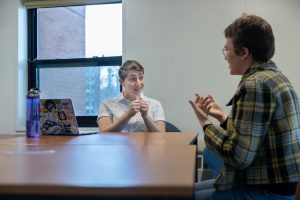
“ASL Community Housing is an outstanding way to be fully immersed in a signing environment that will give [students] a leg up over others in [their] ASL studies,” says Schlang.
In addition to interacting with each other in ASL Community Housing, residents are strongly encouraged to go out and engage with the Deaf community. Gobler keeps floor members informed about events in the local Connecticut Deaf community, such as cornhole tournaments and Christmas parties, for opportunities to connect with more signers and have a greater appreciation for Deaf culture.
Gobler admits this first year of the housing option has been challenging at times, as the tight-knit but small community has 14 residents, none of whom are Deaf or Hard-of-Hearing. However, now that ASL Community Housing is official, Gobler, London, and other members are committed to building it up, just like professors have expanded the ASL program.
“[The ASL program] is building stuff every day,” says Gobler. “There’s now an abroad trip to go to Deaf schools in Jamaica and work with those students. Every day, [professors] are working on the next thing they can add to the program, and I think we have that same mindset of ‘how can we make this better?’”
The community continues to tailor its space to be accessible for Deaf, DeafBlind, and Hard-of-Hearing students, such as through flashing fire alarms on the floor. Gobler and others also work with UConn Residential Life to develop protocols for procedures like room checks that are mindful of Deaf spaces. Additionally, the community hopes to partner with UConn Interpreting Services and the Center for Students with Disabilities to provide what’s best to all members, Gobler says.
In addition to physical accommodations, London emphasizes that all ASL Community Housing residents come with at least some base knowledge about Deaf culture. For example, they know that gently waving or tapping on the shoulder are appropriate ways to get a Deaf or signing person’s attention.
“We have these ways that we can adapt protocols and all this physical stuff, but the awareness of people living in the community is huge,” Gobler says. “One of our residents is a CODA, so her parents are Deaf, and she brings that unique experience and understanding of what their lives are like.”
Next year, the community will also have a resident assistant (RA) proficient in ASL living on the floor, something which Gobler again says is “huge.” Speech, language and hearing sciences major Teanna Minott ’23 (CLAS) is an RA who signs and lives on the floor below. She echoes that the ASL Housing Community can expand students’ understanding of the language and Deaf culture.
“It’s just great to expose yourself to more than what the textbook is showing you,” says Minott.
Gobler, London, and other members are ultimately paving the way so that all students, especially those who are Deaf, DeafBlind, and Hard-of-Hearing, will see the community as a great place to live.
“We just want people to know that this is real,” Gobler says. “We did it. We’re here. It’s official, and we’re open for people to come.”
